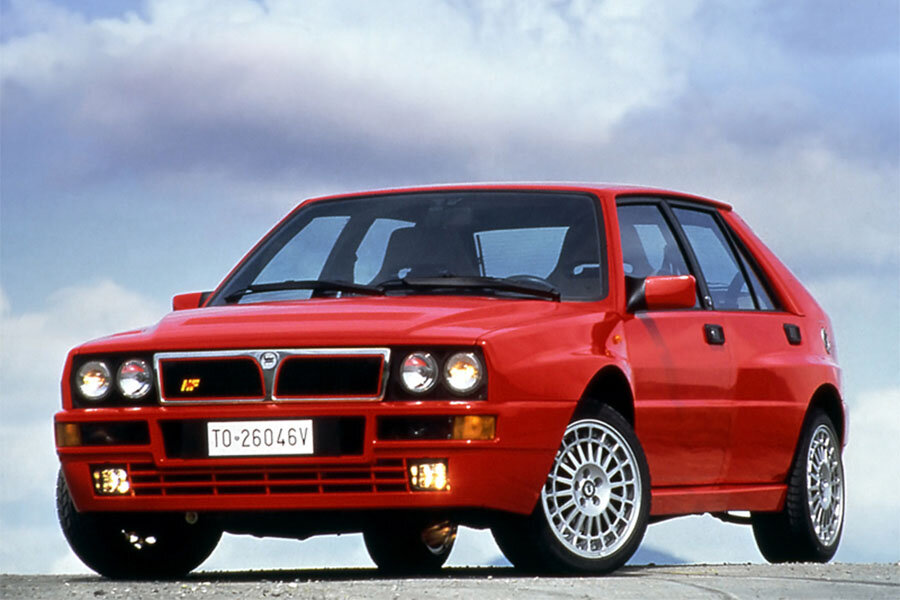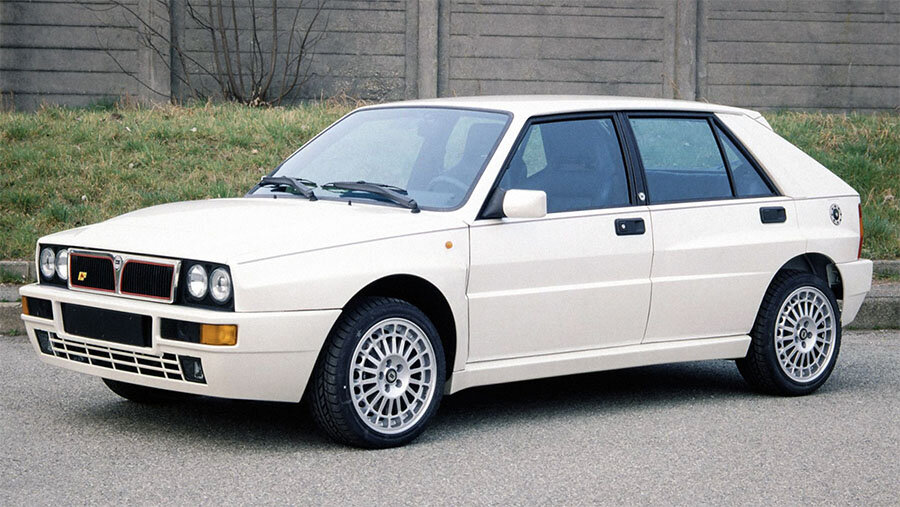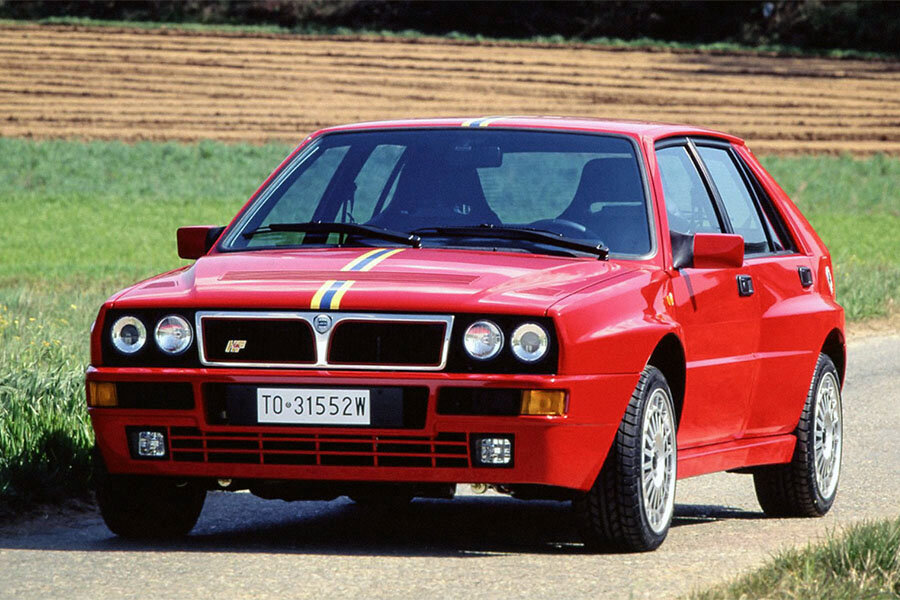Guide: Celebration Special - a Historical & Technical Appraisal of the Lancia Delta HF Integrale Evoluzione 2
/BACKGROUND
After the 1992 season concluded, Lancia bowed out of the World Rally Championship having secured the Manufacturer’s title for the sixth year in succession.
Since the introduction of the Group A Delta HF in 1987, four Driver’s crowns had also been claimed: two for Juha Kankkunen (1987 and 1991) and two for Miki Biasion (1988 and 1989).
For 1993, Lancia would be represented by the privateer Jolly Club. The team was headed by ‘92 Driver’s champion, Carlos Sainz, who joined on a one-season deal.
Sainz’s arrival was the result of a conflict of interest between his personal backer, Repsol, and Toyota’s new title sponsor, Castrol. However, the by now 13-year old Delta in the hands of a satellite team was no longer a match for the might of fully fledged works efforts from Toyota, Ford and the fast-improving Subaru concern.
Despite the fact it had finally been eclipsed by a new generation of rally cars, demand for the iconic HF Integrale remained strong. Not even the legendary Stratos could match its illustrious competition record and customers were still lining up to get their hands on one of the most highly rated road cars on the market.
Having invested heavily to create the Integrale Evoluzione for 1992, in June 1993 Lancia decided to release one final iteration: the Evoluzione 2.
ENGINE / TRANSMISSION
In the engine bay was an uprated and now catalysed version of the 16-valve engine originally designed by Aurelio Lampredi.
It came with a smaller Garrett T3 turbocharger that reduced lag and gave better responsiveness at high revs.
New Magnetti Marelli IAW engine management offered double the previous memory capacity.
To improve emissions, there was a three-way catalyst with Lambda probe. Knock sensors were fitted to the block. A revised ignition system included two coils.
The Evoluzione 2 motor was immediately identifiable by its red cylinder head.
Otherwise, the DOHC inline four cylinder engine was much as before. Displacement was 1995cc thanks to a bore and stroke of 84mm and 90mm respectively. Compression stayed at 8.0:1.
Compared to the Evoluzione 1, the horespower rating went from 210bhp to 215bhp at an identical 5750rpm. The most drastic improvement was in the torque department though: this latest iteration developed 232lb-ft at 2500rpm whereas its predecessor produced 220lb-ft at 3500rpm.
BODYWORK
From the outside, the Evoluzione 2 was identifiable thanks to its new 16-inch diameter wheels. Wheel width stayed at 7.5-inches and the multi spoke five-bolt design introduced on the original Evoluzione was retained.
The first Evoluzione had ushered in an aggressive look and nothing was changed for this latest variant.
It once again featured flared fenders formed in a single pressing, smaller but brighter headlights and deep body-coloured sills.
Brake and engine cooling had also been improved for the Evoluzione with intakes cut from the front bumper and vents carved out from the back of each front fender.
Other special Evoluione features included a wide power bulge, adjustable roof spoiler (now body coloured as standard), a Group A-style fuel filler, a new back bumper with single outlet exhaust cavity and an HF badge on the front grille.
INTERIOR
Inside, the previously optional air-conditioning and the high-backed Recaro front seats fitted to Evoluzione 1 special editions were thrown in as standard.
Otherwise, the interior was imported direct from its predecessor.
Directly behind the three-spoke Momo Corse non airbag steering wheel was a rectangular binnacle that housed most of the vital information. A large speedometer and rev counter were located at each corner, in between which were smaller gauges for turbo boost, battery condition, fuel and water temperature. There were also 14 different warning lights.
Additional read outs for oil pressure and oil temperature were located alongside the vents mounted in the centre of the dash.
Alcantara suede upholstery was standard for the seats and door panels,
CHASSIS
The original Evoluzione had retained the existing steel monocoque bodyshell.
Independent coil sprung suspension was via MacPherson struts at the front and double transverse arms at the rear. Hydraulic shocks were installed along with anti-roll bars at each end.
The first iteration of the Evoluzione had ushered in a host of upgrades focused on improving stability, grip and handling.
These included reinforced struts and bushes, larger diameter dampers with extended travel plus bigger and stiffer springs. An aluminium strut brace was also fitted. At the back, the geometry had been revised with stronger struts, thicker transverse arms and dampers with extended travel.
Brake discs had been enlarged to 281mm at the front and 251mm at the back. Fixed four-piston aluminium calipers were installed as well.
For the Evoluzione 2, ABS was fitted as standard (it had previously been optional).
All Evoluziones came with a larger, more responsive steering box and a supplementary radiator to cool the power steering fluid.
WEIGHT / PERFORMANCE
As a result of the higher specification, Evoluzione 2s were 40kg heavier than their predecessors (now 1340kg).
Top speed was officially unchanged (137mph) but the 0-62mph time dropped from 5.8 to 5.7 seconds.
OPTIONS
Options were limited to leather upholstery and a sunroof. However, Lancia also created a number of special editions with varying levels of additional equipment.
All seven special edition Evoluzione 2s featured a numbered plaque on the centre console.
GIALLA GINESTRA
First to arrive was the Gialla Ginestra of which 220 were built.
They were painted yellow with black alcantara upholstery, yellow stitching and HF-embossed seats.
BLU LAGOS
The Blu Lagos was a run of 215 cars with metallic blue paint, HF-embossed seats and cream leather trim. Some also came with a yellow side stripe.
BIANCO PERLATO
The batch of 365 Bianco Perlato cars came with pearl white paint, HF-embossed seats and blue leather upholstery to include the steering wheel and gear gaiter. Some came with a grey side stripe.
EDIZIONE FINALE
Towards the end of production, Lancia offered two very highly equipped Integrale 2s known as the Edizione Finale and Dealer Collection.
The Edizione Finale was a run of 250 cars, most of which were exported to Japan.
They featured red paint with a yellow and blue HF centre stripe, large pre-Evoluzione-type headlights, black bonnet vents, mesh front grilles, enamelled HF wingshields, special tailgate badges and anthracite wheels.
Inside, the Edizione Finale was equipped with black alcantara upholstery, drilled alloy pedals, some exposed carbonfibre trim, a push-button starter, passenger footrest and silver-dash fascia.
DEALER COLLECTION
Most of the Dealer Collection production run stayed in Europe.
180 were manufactured. They came with candy red paint, tan leather upholstery, drilled alloy pedals, a push-button starter, passenger footrest and silver dash fascia.
CLUB HI-FI
In addition, Lancia produced two small runs of Evoluzione 2s that were only available to Lancia club members.
The Club Hi-Fi comprised 20 examples with dark blue paint, a yellow and blue HF centre stripe and brown leather upholstery.
CLUB LANCIA
The 18 Club Lancia variants had red paint, a yellow and blue HF centre stripe and black alcantara upholstery.
END OF PRODUCTION
The last Evoluzione 2 left Lancia’s Maggiora factory in November 1994. Total production was 4223 units, all of which were left-hand drive.
Text copyright: Supercar Nostalgia
Photo copyright: Lancia - https://www.lancia.com






































